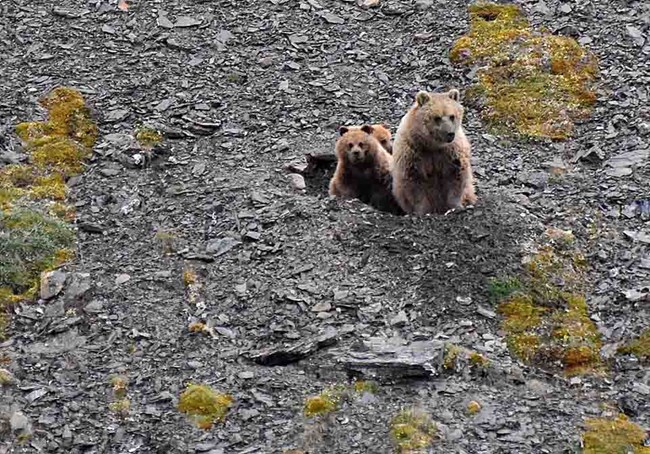Last updated: June 4, 2020
Article
Brown Bear Monitoring Methods

NPS/Mat Sorum
Using non-invasive mark-resight and sign occupancy surveys to monitor low-density brown bear populations across large landscapes
Abstract
Reliable assessments of low-density carnivore populations such as brown bears (Ursus arctos) are often limited by a lack of sufficient information for strong inference at appropriate scales. Standard approaches often rely on physical marking of individuals or the use of inherently field-intensive hair-snag or distance sampling techniques. Although these tools are very useful, logistical and monetary costs often limit their successful application, particularly in large, remote areas. We developed a novel photographic mark-resight approach using physical characteristics and spatial locations of individual brown bears to temporarily mark individuals over a short revisit interval. We applied this approach along with site-occupancy techniques to evaluate a low-density brown bear population in northwestern Alaska. Based on the mark-resight approach, we estimated there were 420 [95% CrI:274–650] independent and 713 [95% CrI:474–1070] total brown bears in our 19,998km² study area. When expressed as densities, these estimates were consistent with those of other low-density populations from the surrounding area. Estimated den and bear site-occupancy rates were similar, 0.48 [95% CrI:0.37–0.63] and 0.40 [95% CrI;0.28–0.55], respectively. Close congruence among occupancy and abundance estimates supported the robustness of our new mark-resight approach and provided additional metrics for population monitoring. Together, these parallel metrics provide a general framework for monitoring low density populations of brown bears and other rare carnivores when physical marking or intensive survey techniques are impractical.
Schmidt, J. H., H. L. Robison, K. L. Rattenbury, and B. S. Shults. 2017. Using non-invasivemark-resight and sign occupancy surveys to monitor low-density brown bear populations across large landscapes. Biological Conservation 207(2017):47-54.
